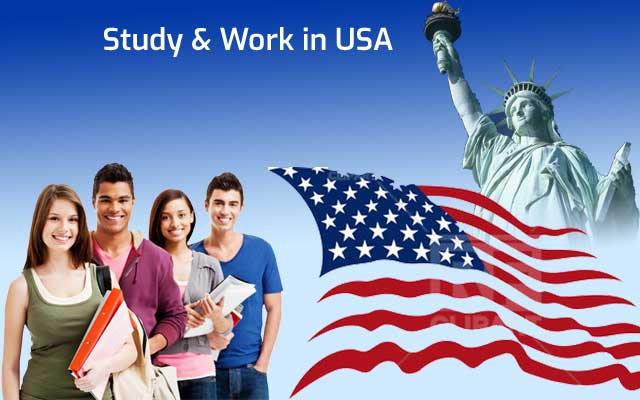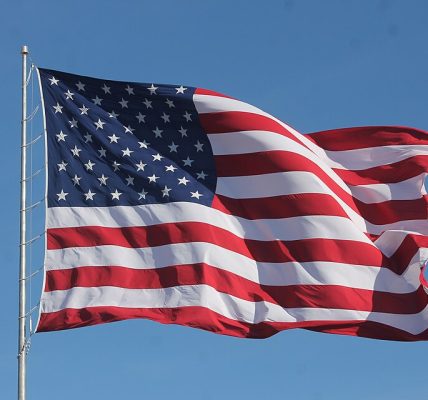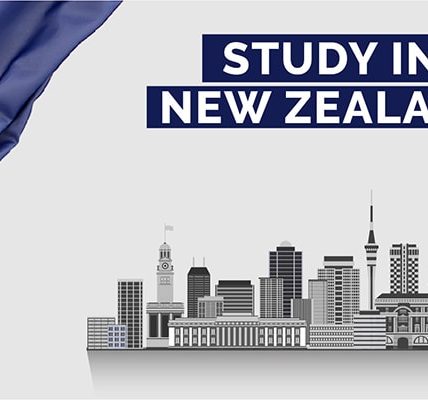USA Work and Study – The United States has long been a top destination for international students seeking world-class education, career opportunities, and cultural experiences. USA Work and Study.
With its prestigious universities, diverse academic programs, and vibrant job market, studying in the U.S. offers numerous opportunities for personal and professional growth.
One of the key advantages of studying in the U.S. is the ability to work while attending school, which can help students manage their living expenses, gain practical work experience, and enhance their resumes.
In this article, we’ll explore the work and study opportunities available for international students in the United States, including the visa requirements, eligibility criteria, types of work opportunities, and tips for balancing work and study life. USA Work and Study.
The Benefits of Studying in the United States
Before diving into the work-study options, it’s important to understand why the U.S. is such a popular destination for international students. The country offers several key benefits for those pursuing higher education:
- World-Class Education: The United States is home to many of the world’s top universities, including Ivy League schools such as Harvard, Yale, and Princeton, as well as other prestigious institutions like Stanford, MIT, and UC Berkeley. These universities offer a wide range of academic programs and are known for their rigorous academic standards, research opportunities, and highly skilled faculty.
- Cultural Diversity: The U.S. is a melting pot of cultures, and students have the chance to interact with peers from all over the world. This diversity enriches the academic experience, allowing students to broaden their perspectives and develop a global network of contacts.
- Cutting-Edge Research: American universities are leaders in research and innovation, providing students with access to state-of-the-art labs, technologies, and resources. Many international students come to the U.S. to take advantage of the research opportunities available in fields such as engineering, medicine, business, and the sciences.
- Career Opportunities: The U.S. job market is one of the largest and most dynamic in the world. Graduating from an American institution can open doors to a wide range of career opportunities, both in the U.S. and internationally. Many U.S. universities have strong connections with industry leaders and offer career services to help students secure internships and full-time employment after graduation.
- Work and Study Opportunities: Unlike some countries, the U.S. allows international students to work while studying, providing a valuable opportunity to earn money, gain work experience, and enhance their academic journey.
Types of U.S. Visas for International Students
Before studying in the U.S., international students must obtain the appropriate visa. The most common visas for international students are:
1. F-1 Visa: Academic Students
The F-1 visa is the most common student visa for individuals who wish to pursue academic studies in the U.S. This visa is issued to students who are enrolled in a full-time program at a Student and Exchange Visitor Program (SEVP)-certified school, such as a university, college, or high school.
- Eligibility: To be eligible for the F-1 visa, students must be enrolled in a full-time academic program at an accredited institution, have sufficient financial resources to cover tuition fees and living expenses, and intend to return to their home country after completing their studies.
- Work Options: F-1 visa holders are eligible to work under certain conditions, including on-campus employment and off-campus employment through optional practical training (OPT) and curricular practical training (CPT).
2. J-1 Visa: Exchange Visitors
The J-1 visa is designed for students, researchers, and exchange visitors who are participating in a cultural exchange program. This visa is often used by students who are enrolled in exchange programs, internships, or practical training programs in the U.S.
- Eligibility: To qualify for a J-1 visa, students must be accepted into an exchange visitor program approved by the U.S. Department of State. This visa is often issued to students who will engage in academic, research, or practical training activities.
- Work Options: J-1 visa holders can work under specific conditions, such as during their program of study (e.g., internships or research), and may also be eligible for post-program work in the U.S. through the J-1 Work Authorization.
3. M-1 Visa: Vocational Students
The M-1 visa is issued to students pursuing vocational or non-academic courses, such as technical training or skills development programs. Unlike F-1 students, M-1 students are generally not permitted to work while studying.
- Eligibility: To qualify for the M-1 visa, students must enroll in a full-time program at a U.S. vocational school that is approved by the SEVP.
- Work Options: M-1 students are restricted from working during their studies, except in very limited circumstances.
Working While Studying in the U.S.
International students on F-1 and J-1 visas have opportunities to work while studying in the U.S. However, there are restrictions on the types of work they can do and the number of hours they can work. It’s important for students to familiarize themselves with these regulations to avoid violating the terms of their visa.
1. On-Campus Employment
One of the easiest ways for international students to work while studying in the U.S. is through on-campus employment. On-campus work refers to jobs that are located on the campus of the student’s university or college. These jobs can include working in the library, cafeteria, student center, or bookstore, as well as research assistant positions.
- Eligibility: F-1 and J-1 students are eligible to work on-campus without requiring a work permit.
- Work Hours: During the academic year, F-1 and J-1 students can work up to 20 hours per week during the semester. During official school breaks (e.g., summer vacation or winter holidays), students can work full-time (40 hours per week).
- No Work Authorization Required: On-campus jobs for F-1 and J-1 students do not require additional authorization from the U.S. Citizenship and Immigration Services (USCIS), as long as the student remains in good standing with their visa status.
2. Off-Campus Employment
Off-campus employment refers to work done outside of the student’s university or college, and it is subject to additional regulations. USA Work and Study.
a. Curricular Practical Training (CPT)
CPT is a type of off-campus work authorization available to F-1 students who want to gain practical experience related to their field of study. CPT can be part-time or full-time and can be either paid or unpaid.
- Eligibility: Students must have completed one academic year of full-time study (unless they are enrolled in a graduate program requiring immediate CPT), and the work must be an integral part of their academic program.
- Work Hours: Students can work part-time (up to 20 hours per week) during the academic term and full-time (more than 20 hours per week) during breaks or vacations.
- Authorization: CPT must be authorized by the Designated School Official (DSO) at the student’s institution before the student begins working.
b. Optional Practical Training (OPT)
OPT allows F-1 students to work in the U.S. for up to 12 months after completing their academic program. Students in STEM (Science, Technology, Engineering, and Mathematics) fields may be eligible for a 24-month extension, allowing them to work for a total of 36 months.
- Eligibility: Students must have completed at least one full academic year of study at a SEVP-approved school and have applied for OPT before completing their degree program.
- Work Hours: Students can work full-time during OPT (up to 40 hours per week). During the 12-month period, students can work for any employer in the U.S. related to their field of study.
- Authorization: Students must apply for OPT authorization from USCIS, and they cannot begin working until they receive approval.
3. J-1 Work Authorization
J-1 visa holders may be eligible for work authorization depending on the type of exchange program they are participating in. J-1 students typically work in internships, research programs, or cultural exchange activities.
- Eligibility: J-1 students must be enrolled in a program that includes practical training or internships, or they may be eligible for a work authorization through the J-1 sponsor.
- Authorization: Work authorization must be obtained through the program sponsor or the U.S. Department of State.
Post-Graduation Work Opportunities
After completing their studies, international students may have the opportunity to stay and work in the U.S. through the Optional Practical Training (OPT) program or by applying for the H-1B visa.
1. Optional Practical Training (OPT)
As mentioned earlier, F-1 students can apply for OPT after graduation, which allows them to work for up to 12 months (with a 24-month extension for STEM graduates). This work authorization provides valuable work experience in the U.S. and may lead to permanent employment opportunities.
2. H-1B Visa: Specialty Occupations
The H-1B visa is a non-immigrant work visa for individuals employed in specialty occupations, which typically require a bachelor’s degree or higher. Many students who complete their studies in the U.S. and wish to stay and work in the country apply for the H-1B visa, especially in fields such as engineering, technology, and healthcare.
- Eligibility: To be eligible for the H-1B visa, students must have an employer willing to sponsor them, and the job must require specialized knowledge or a degree in a specific field.
- Application Process: H-1B visas are subject to an annual cap, and the application process is competitive. Employers must file a petition on behalf of the student, and the student must be selected through a lottery system.
Conclusion
Studying and working in the United States offers international students a wealth of opportunities to enhance their education, gain work experience, and build their professional networks. USA Work and Study.
By obtaining the right visa, understanding the regulations surrounding work while studying, and taking advantage of programs like OPT, CPT, and internships, international students can make the most of their time in the U.S. and set themselves up for a successful future.
With careful planning and dedication, students can navigate the challenges of balancing work and study and reap the rewards of an enriching academic and professional experience in the United States. USA Work and Study.




